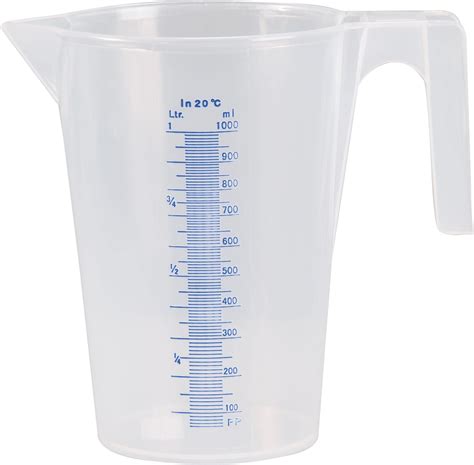The Essential Guide to Calculating Volume and Capacity in Liters
Understanding the concept of volume and capacity is crucial in various fields, including science, engineering, cooking, and everyday life. One of the most common units used to measure these quantities is the liter, abbreviated as L. This article will provide a comprehensive guide to calculating volume and capacity in liters.
Understanding the Liter
The liter is a metric unit of volume defined as one cubic decimeter (dm³). It is slightly larger than a quart and about four cups. Liters are commonly used to measure liquids, gases, and some solids.
Calculating Volume
Volume, measured in liters, represents the amount of space occupied by a substance. It can be calculated using the following formula:

Volume = Length x Width x Height
For example, to calculate the volume of a rectangular box with a length of 5 cm, a width of 3 cm, and a height of 2 cm:
Volume = 5 cm x 3 cm x 2 cm = 30 cm³
Since 1 cm³ is equal to 1 mL, the volume of the box is:
Volume = 30 cm³ = 30 mL
Calculating Capacity
Capacity refers to the maximum volume a container can hold. It is typically used to measure the volume of liquids and gases. To calculate the capacity of a container in liters, simply fill it to its maximum level and measure the volume of the liquid or gas it contains.
Converting Units of Volume
In addition to liters, other units of volume are commonly used. Here are some conversion factors:
| Unit |
Conversion to Liters |
| Milliliter (mL) |
1 mL = 0.001 L |
| Deciliter (dL) |
1 dL = 0.1 L |
| Centiliter (cL) |
1 cL = 0.01 L |
| Kiloliter (kL) |
1 kL = 1000 L |
| Gallon (UK) |
1 gallon (UK) = 4.55 L |
| Gallon (US) |
1 gallon (US) = 3.79 L |
Applications of Liters
Liters have various applications, including:

- Measuring the volume of liquids in cooking recipes
- Determining the capacity of fuel tanks and gas cylinders
- Calculating the amount of liquid in swimming pools and bathtubs
- Estimating the volume of blood in the human body
- Calibrating scientific equipment, such as pipettes and beakers
Table 1: Volume Equivalents
| Volume (L) |
Equivalent Volume (mL) |
| 1 |
1000 |
| 0.5 |
500 |
| 0.25 |
250 |
| 0.1 |
100 |
| 0.05 |
50 |
Table 2: Capacity Conversions
| Unit |
Conversion to Liters |
| Milliliters (mL) |
1 L = 1000 mL |
| Deciliters (dL) |
1 L = 10 dL |
| Centiliters (cL) |
1 L = 100 cL |
| Kiloliters (kL) |
1 kL = 1000 L |
| Gallons (UK) |
1 L = 0.22 gallons (UK) |
| Gallons (US) |
1 L = 0.264 gallons (US) |
Table 3: Volume Relationships
| Relationship |
Formula |
| Volume of a cube |
Volume = Side length³ |
| Volume of a cylinder |
Volume = πr²h |
| Volume of a sphere |
Volume = (4/3)πr³ |
Effective Strategies for Calculating Volume and Capacity
- Use accurate measuring tools, such as graduated cylinders and measuring cups.
- Convert units carefully to ensure consistency.
- Consider the shape of the object or container to determine the appropriate formula.
- Check your calculations thoroughly to avoid errors.
Common Mistakes to Avoid
- Using the wrong unit of volume or forgetting to convert units.
- Neglecting to consider the shape of the object or container when calculating volume.
- Making rounding errors or introducing calculation mistakes.
Pros and Cons of Using Liters
Pros:
-
Metric unit: Liters are part of the metric system, which is an internationally recognized system of measurement.
-
Convenient conversions: Liters are easily converted to and from other metric units of volume.
-
Widely accepted: Liters are used globally in scientific, industrial, and commercial settings.
Cons:
-
Not as common in the US: Liters are not as widely used in the United States, where gallons are more prevalent.
-
Can be confusing for smaller volumes: Using liters for very small volumes (e.g., a few milliliters) can be confusing.
Frequently Asked Questions (FAQs)
1. How many liters are in a gallon?
- 1 gallon (UK) is equal to 4.55 liters.
- 1 gallon (US) is equal to 3.79 liters.
2. How do I measure the volume of an irregular object?

- Use a water displacement method, where you immerse the object in water and measure the change in water volume.
3. What is the formula for calculating the volume of a cone?
- Volume = (1/3)πr²h, where r is the radius of the base and h is the height.
4. What is the capacity of a standard soda can?
- Approximately 355 milliliters (mL), or 0.355 liters.
5. How many liters of blood are in the average human body?
- Approximately 5 liters for an adult.
6. What is the difference between volume and displacement?
- Volume measures the amount of space occupied by a substance, while displacement measures the amount of space occupied by an object in a fluid.
7. How do I calibrate a pipette?
- Use a known volume of liquid and adjust the pipette's volume until it reads the correct amount.
8. What is the maximum capacity of a standard swimming pool?
- Varies depending on the size of the pool, but typically between 10,000 and 50,000 liters.
